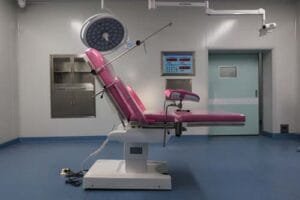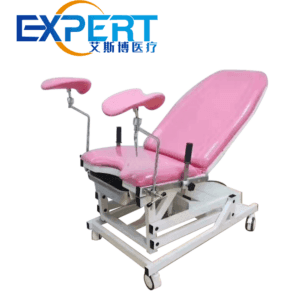Address
304 North Cardinal St.
Dorchester Center, MA 02124
Work Hours
Monday to Friday: 7AM - 7PM
Weekend: 10AM - 5PM
In the realm of modern healthcare, technological advancements have revolutionized the way medical procedures are performed. One such innovation is the electric delivery table, a pivotal piece of equipment in maternity wards and gynecological clinics. These specialized tables offer a plethora of features designed to ensure the comfort and safety of both the patient and medical professionals during childbirth and various gynecological examinations. In this comprehensive guide, we’ll explore the key features of an electric delivery table and why they are indispensable in today’s healthcare settings.

Delivery tables have come a long way since their inception. Traditional delivery tables were stationary and offered limited adjustability, making them less than ideal for the dynamic needs of childbirth and gynecological procedures. However, the advent of electric delivery tables has marked a significant transformation in the field, offering an array of features that cater to the comfort and safety of patients and healthcare providers.
Electric delivery tables serve as versatile platforms for various medical procedures, primarily childbirth and gynecological examinations. Their significance lies in providing a stable, comfortable, and safe environment for these processes. Let’s delve deeper into the key features that make these tables indispensable.
One of the fundamental features of an electric delivery table is its height adjustment capability. This feature allows healthcare professionals to position the table at an ergonomic height, reducing the strain on their backs and ensuring better access to patients during procedures.
Electric delivery tables often come equipped with the ability to tilt into Trendelenburg and reverse Trendelenburg positions. These inclinations are particularly useful during labor and delivery, as they facilitate gravity-assisted birthing positions and can help manage emergency situations.
Lateral tilt functionality enables the table to tilt laterally, providing lateral positioning options during childbirth or specific gynecological procedures. This feature can be crucial in ensuring the well-being of both the patient and the medical team.
Electric delivery tables feature adjustable leg supports that can be positioned to suit the needs of the patient. This flexibility allows for comfortable leg positioning during examinations and childbirth.
The upholstery and cushioning of electric delivery tables are designed for maximum comfort. High-quality, easily cleanable materials ensure that patients remain comfortable during prolonged procedures while maintaining strict hygiene standards.
These tables often include adjustable armrests and footrests, allowing patients to maintain a relaxed and comfortable posture. These features are especially crucial during gynecological examinations, where patient comfort is paramount.
Many electric delivery tables come with wheels for easy mobility within the healthcare facility. Additionally, the tables are designed to provide easy access for patients with reduced mobility, ensuring that they can be comfortably positioned for medical procedures.
Safety is a top priority in medical settings. Electric delivery tables are engineered to support substantial weight capacities, ensuring the stability and security of patients during childbirth and examinations.
These tables are equipped with a range of safety features, including locking mechanisms to prevent accidental movements and control panels with emergency stop buttons. These precautions ensure that medical procedures can be conducted with the utmost safety.
In healthcare environments, infection control is paramount. Electric delivery tables are designed with smooth surfaces and materials that can be easily disinfected, reducing the risk of infection transmission.
Electric delivery tables are often compatible with a variety of accessories such as stirrups, leg supports, and instrument trays. This compatibility streamlines medical procedures by providing easy access to necessary tools and equipment.
Many modern electric delivery tables are designed to integrate seamlessly with imaging equipment like ultrasound machines. This allows for real-time monitoring and improved diagnostics during procedures.
Intuitive control panels and user-friendly interfaces make it easy for healthcare professionals to adjust the table’s settings, ensuring efficient and precise positioning during medical procedures.

The ergonomic design of electric delivery tables reduces strain on healthcare providers, leading to improved comfort during procedures and potentially lowering the risk of workplace injuries.
Patients benefit from the comfort, safety, and accessibility provided by electric delivery tables, contributing to a more positive and less stressful medical experience.
Efficient positioning and the ability to adapt to various medical procedures can lead to time savings, increasing the overall efficiency of healthcare facilities and potentially reducing costs.
Electric delivery tables are versatile and suitable for various childbirth scenarios, including natural births and cesarean sections. Their adjustable features make them adaptable to different requirements.
Cleaning and maintenance procedures typically involve wiping down surfaces with disinfectants and ensuring that all moving parts are in good working condition. Refer to the manufacturer’s guidelines for specific instructions.
Yes, most electric delivery tables are designed to accommodate patients of different sizes and body types. They offer flexibility in adjusting height, width, and positioning to ensure patient comfort and safety.
When purchasing an electric delivery table, it’s advisable to check for safety certifications, such as ISO and FDA approvals, to ensure that the table meets the required safety standards.
While electric delivery tables are designed to be user-friendly, healthcare professionals should receive training on their operation and safety features to ensure proper usage.
In conclusion, electric delivery tables have become indispensable in modern healthcare settings, offering a multitude of features that prioritize patient comfort, safety, and the efficiency of medical procedures. Their adaptability and versatility make them a valuable asset in maternity wards and gynecological clinics, providing healthcare providers with the tools they need to deliver exceptional care to patients.
